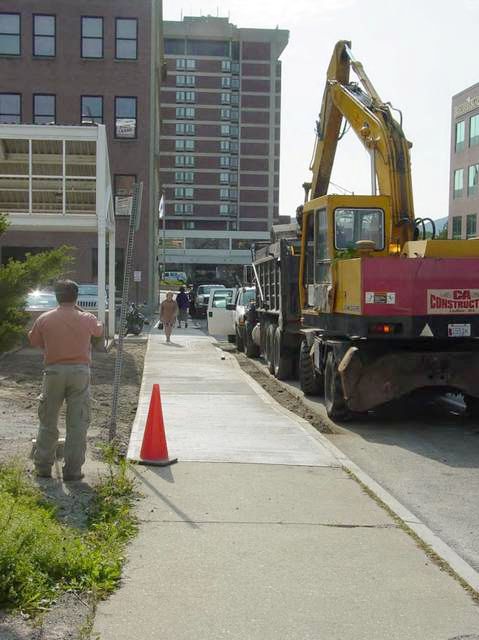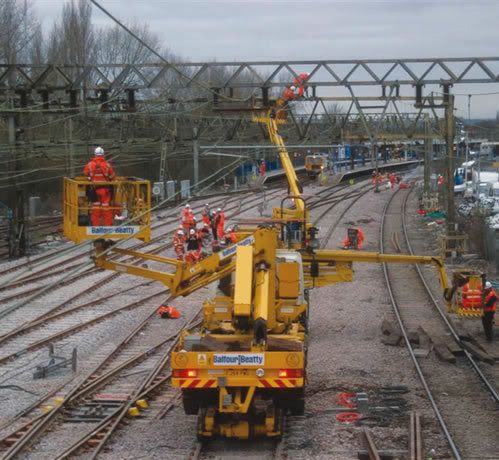Burning the Midnight Oil for Progressive Populism
How long was the Great Depression? Roughly ten years, 1929 to the outbreak of WWII, which launched US into arms-building well before we actually entered the war.
How long did we dither about fixing it? Well, there was three years of Hoover. And then Roosevelt was elected, and then were all those fights with the Supreme Court knocking down New Deal legislation, and the threat to pack the court, and the big mid-term election wins by the Democrats giving them the political ability to pack the court if they wished, and the Supreme Court backed down, and the New Deal got underway in earnest.
We dithered for five years, and the Great Depression lasted for roughly ten.
Japan dithered quite a bit in its "Lost Decade", where the bursting of a real estate bubble was followed by an extended period of economic stagnation. It was not until 1995 that a "Stimulus" budget was adopted. And it was not until after the turn of the century that private business investment started to pick up again.
It may be that the longer you dither, the longer the downturn lasts.
Populist movements don't build themselves ...
... It doesn't matter what the "horse race" outcome of the campaign is, if we fight the campaign. Fighting it, we learn how to fight. Learning how to fight political battles, we become citizens again. Becoming citizens again, we reclaim the Republic that lies dormant beneath the bread and circuses of modern American society.
- Picture Credit: David Leeson (#8)
Tuesday, January 27, 2009
Monday, January 26, 2009
Burning Fires
Hot Air Balloons Could Power Your House by Mike Chino (Inhabitat)
The Economic Recovery Plan’s Bold Move To Repower America by Brad Johnson (The Wonk Room)
NRPA asks Congress to include Parks & Recreation funding in Economic Recovery Package (American Trails)
Part II: Green laboratories of democracy by Hannah McCrea (Grist)
Scotland to Map Wave and Tidal Power Potential by Megan Treacy (EcoGeek)
False Dichotomies: Capital or Operating? (Cap'n Transit Rides Again)
Oslo Buses Put Waste to Work By Jorge Chapa (Inhabitat)
First 100% Sustainable Island in the Caribbean by Kristie Wilson (Inhabitat, h/o Jerome a Paris)
The Economic Recovery Plan’s Bold Move To Repower America by Brad Johnson (The Wonk Room)
NRPA asks Congress to include Parks & Recreation funding in Economic Recovery Package (American Trails)
Part II: Green laboratories of democracy by Hannah McCrea (Grist)
Scotland to Map Wave and Tidal Power Potential by Megan Treacy (EcoGeek)
False Dichotomies: Capital or Operating? (Cap'n Transit Rides Again)
Oslo Buses Put Waste to Work By Jorge Chapa (Inhabitat)
First 100% Sustainable Island in the Caribbean by Kristie Wilson (Inhabitat, h/o Jerome a Paris)
Sunday, January 25, 2009
Transport Stimulus: Doing It Right.
Burning the Midnight Oil for Living Energy Independence
Cross-posted or to be cross-posted to The Economic Populist, ProgressiveBlue, My Left Wing, Congress Matters, Docucharma, and Agent Orange.

OK, so, to make an egregiously long story merely excessively long, a very strange thing happened on the road to the Stimulus Package. As Rep. Oberstar told the U.S. Conference of Mayors:
As I described in Transport Stimulus: You're Doing It Wrong, actual effective stimulus spending was shortchanged -- and in particular spending with substantial long term economic and strategic benefits -- to "pay for" tax cuts.
In reality, if we want to be able to "afford" tax cuts, what we need first and foremost is growth, and economic growth requires effective government investment in the infrastructure of a New Energy Economy.
Energy Independent Transport has a strategic defense imperative, and a long term economic development imperative, on top of the substantial transport benefits and, in the Stimulus Bill as it stands, a substantial and primarily untapped potential for short-term stimulus.
And "not enough shovel ready projects" was reportedly the word from the last days of the Bush Transportation Department.

Now, it is quite true that some "sexy" rail transport projects really aren’t shovel ready. It will take six years to electrify our main freight rail lines and provide 110mph Rapid Passenger Rail to most of the country. Bullet trains in California and the Northeast Corridor (NEC) will take fifteen to twenty years. These require medium to long term plans and funding.
But the bulk of the previous post was digging into the details, and finding out that we know for sure that there are untapped, shovel ready projects out there.
The question here is, how could this be done right?
Here's an idea. Suppose we set up accounts for the responsible local authority for transit to be spent on any qualifying project from a list of Energy Independent Transport projects. Fund it at the level of $100 per person -- roughly $30b total. And funds that have not been spent in a year get re-allocated to authorities that funded qualifying projects.
Some of those local transit authorities will be "Transit Authorities" (which do exists in quite a lot of places). Where there is no local transit authority, that will be the incorporated municipality or county. In Native American treaty reservations, it seems like it will be a First Nation council of some form.
If Congress sets its mind to it, it can work out a way to specify the local transit authority. And no bailing out and saying some localities cannot be trusted, and the money goes to the State Department of Transportation on their behalf ... we have just seen that the majority of State Departments of Transportation either do not understand the importance of putting forward shovel-ready Energy Independence Transport projects ... or do not really understand the needs out where the wheel hits the rail.
And if Congress sets its mind to it, it can work out a list of Energy Independence Transport projects. One thing that makes it easier is that it doesn't have to prioritize them, or decide relative levels of funding. The local authorities will do that. Just list projects that won't be a waste of the stimulus dollars on the obsolete transport systems of the 20th century, and we will be fine.

Some ideas to get the list started:
... add to the list yourself.
But whatever is on the list ... make the funds "use it in a year or lose it" ... and you will see the bulk of the funds spent in the first year. And if you don't ... well, obviously the second year the funds will get to the transit authorities who have a demonstrated ability to find shovel-ready projects.
I expect that we would quickly learn how many "shovel ready" Energy Independence Transport projects there really are out there.
Read About It (1983)
Cross-posted or to be cross-posted to The Economic Populist, ProgressiveBlue, My Left Wing, Congress Matters, Docucharma, and Agent Orange.

OK, so, to make an egregiously long story merely excessively long, a very strange thing happened on the road to the Stimulus Package. As Rep. Oberstar told the U.S. Conference of Mayors:
That is why we set forth this $85-billion initiative from our committee. It's been reduced in the final going. We expect that it'll come out somewhere around $63 billion, but $30 billion for highways.
The reason for the reduction in overall funding … was the tax cut initiative that had to be paid for in some way by keeping the entire package in the range of $850 billion.
As I described in Transport Stimulus: You're Doing It Wrong, actual effective stimulus spending was shortchanged -- and in particular spending with substantial long term economic and strategic benefits -- to "pay for" tax cuts.
In reality, if we want to be able to "afford" tax cuts, what we need first and foremost is growth, and economic growth requires effective government investment in the infrastructure of a New Energy Economy.
Energy Independent Transport has a strategic defense imperative, and a long term economic development imperative, on top of the substantial transport benefits and, in the Stimulus Bill as it stands, a substantial and primarily untapped potential for short-term stimulus.
And "not enough shovel ready projects" was reportedly the word from the last days of the Bush Transportation Department.

Now, it is quite true that some "sexy" rail transport projects really aren’t shovel ready. It will take six years to electrify our main freight rail lines and provide 110mph Rapid Passenger Rail to most of the country. Bullet trains in California and the Northeast Corridor (NEC) will take fifteen to twenty years. These require medium to long term plans and funding.
But the bulk of the previous post was digging into the details, and finding out that we know for sure that there are untapped, shovel ready projects out there.
The question here is, how could this be done right?
Here's an idea. Suppose we set up accounts for the responsible local authority for transit to be spent on any qualifying project from a list of Energy Independent Transport projects. Fund it at the level of $100 per person -- roughly $30b total. And funds that have not been spent in a year get re-allocated to authorities that funded qualifying projects.
Some of those local transit authorities will be "Transit Authorities" (which do exists in quite a lot of places). Where there is no local transit authority, that will be the incorporated municipality or county. In Native American treaty reservations, it seems like it will be a First Nation council of some form.
If Congress sets its mind to it, it can work out a way to specify the local transit authority. And no bailing out and saying some localities cannot be trusted, and the money goes to the State Department of Transportation on their behalf ... we have just seen that the majority of State Departments of Transportation either do not understand the importance of putting forward shovel-ready Energy Independence Transport projects ... or do not really understand the needs out where the wheel hits the rail.
And if Congress sets its mind to it, it can work out a list of Energy Independence Transport projects. One thing that makes it easier is that it doesn't have to prioritize them, or decide relative levels of funding. The local authorities will do that. Just list projects that won't be a waste of the stimulus dollars on the obsolete transport systems of the 20th century, and we will be fine.

Some ideas to get the list started:
- Operating subsidies to reduce public transport fares below 2008 levels to the end of 2010
- Operating subsidies to increase public transport services beyond 2008 levels to the end of 2010
- Purchase of Electric and Pluggable Hybrid Electric public transport vehicles
- Capital backlog on rail transport and transit
- Investment in Rail/Bus interchanges
- Equal Access to Bus Stops
- Building Sidewalks
- Building Pedestrian and Cycle bridges over State Routes, US Routes, and Interstates
- Bike parking and Bike Lockers at public facilities and public transport stops
- Fully paved and physically grade separated cycleways
- Electrification of rail corridors
- Electrification of trolleybus routes
... add to the list yourself.
But whatever is on the list ... make the funds "use it in a year or lose it" ... and you will see the bulk of the funds spent in the first year. And if you don't ... well, obviously the second year the funds will get to the transit authorities who have a demonstrated ability to find shovel-ready projects.
I expect that we would quickly learn how many "shovel ready" Energy Independence Transport projects there really are out there.
Read About It (1983)
Saturday, January 17, 2009
Transport Stimulus: You're Doing It Wrong
 Burning the Midnight Oil for Energy Independence at MLW, The Economic Populist, Docudharma, ProgressiveBlue and Congress Matters. And Silver Pen Award Winner
Burning the Midnight Oil for Energy Independence at MLW, The Economic Populist, Docudharma, ProgressiveBlue and Congress Matters. And Silver Pen Award WinnerThere is this big emphasis on "shovel ready projects" in the Stimulus Bill ... but now that the details are coming out, we can see that in transport, its just a load of horseshit used as an excuse for supporting business as usual.

The headline numbers are $30b highway spending, $10b for public transport and rail:
- Transit Capital Assistance, $15.9b in shovel ready projects, $6b in funding
- Amtrak, more than $10b in capital backlog, $0.8b in funding
- Fixed Guideway Infrastructure Investment, $50b capital backlog, $2b in funding
- Capital Investment Grants, $2.4b in already approved projects, $1b in funding
I got a "shovel-ready" project for you ... shoveling out the bullshit from the Bush Administration Department of Transport and replacing the pandering to the oil companies with a concern for America's Economic Future.
The Details, Wherein The Devil Lies
Take the following details, wherein the devil always lies. Under the summary description, "$10 billion for transit and rail to reduce traffic congestion and gas consumption" ... which is fishy right there, since everybody knows there are more than $10b in deferred maintenance to get passenger and freight rail in this country, and more than $10b in freight bottlenecks, many of which have been "studied" to death (since Yet Another Study is much cheaper than funding capital works) ... and we see the following specifics (emphases added):
Capital Assistance to States—Intercity Passenger Rail Service Recovery Funding: $300 millionNo detail on the number of "shovel ready" projects, but AASHTO annual investment needs estimated at roughly $3b annually, allocation of 10% of that.
The Capital Assistance to States—Intercity Passenger Rail Service program provides grants on a discretionary basis to states to fund necessary capital improvements to improve intercity passenger rail service. Over the last 10 years, ridership on intercity routes that benefit from state support has grown by 73 percent. Grants under this program are awarded to the most meritorious projects as measured against statutory criteria. The FY 2008 grants demonstrated the demand of this program. Applications were greatly oversubscribed even though applications were required within 90 days of the start of this new program. AASHTO has estimated intercity passenger rail corridor investment needs during the 2007-2012 timeframe as totaling $18.502 billion.
Amtrak Capital Grants Recovery Funding: $800 millionA backlog in excess of $10b, funding of under 8% of that.
The National Railroad Passenger Corporation (Amtrak) provides intercity passenger rail service over a system of approximately 20,000 miles in 46 states. It also owns and maintains the most intensively used segment of railroad in the U.S., the Washington, D.C. – New York City – Boston, Northeast Corridor (NEC), which is an integral part of the intercity passenger transportation system in the most densely populated section of the U.S. The NEC carries a majority of air/ rail trips between Washington and NYC. The NEC also hosts commuter and freight rail systems serving the major cities of the Northeast. Amtrak has been consistently undercapitalized during its 37 year existence, and its infrastructure is aging. Recent estimates by the Department of Transportation’s Inspector General of Amtrak’s capital backlog, just on the NEC, exceeded $10 billion. As a result of aging infrastructure both the speed and capacity of NEC rail passenger operations are limited.
Transit Capital Assistance Recovery Funding: $6.000 billion$15.9b ready to go projects, funding at 38% of that.
These funds will be used to purchase buses and equipment needed to provide additional public transportation service and to make improvements to intermodal and transit facilities. The Department of Transportation’s 2006 Conditions and Performance Report indicated there is an annual investment gap of $3.2 billion to maintain our transit systems and an annual gap of $9.2 billion to begin to improve our transit systems. In addition, a January 2009 survey of the American Public Transportation Association (APTA) identified 787 ready-to-go transit projects totaling $15.9 billion. Funds will be distributed through the existing urban and rural transit formulas. $5.4 billion will be distributed to urban communities and $600 million will be distributed to transit agencies that serve rural communities. It is estimated that over 165,000 jobs will be created by this investment.
Fixed Guideway Infrastructure Investment Recovery Funding: $2.000 billionCapital backlog of $50b, funding at 4% of that.
These funds will be used for capital projects to modernize or improve existing fixed guideway systems, including purchase and rehabilitation of rolling stock, track, line equipment, structures, signals and communications, power equipment and substations, passenger stations and terminals, security equipment and systems, maintenance facilities and equipment, operational support equipment including computer hardware and software, system extensions, and preventive maintenance. Funds will be distributed through the existing fixed guideway formula. It is estimated that the state-of-good-repair capital backlog for existing fixed guideway systems is nearly $50 billion.
Capital Investment Grants Recovery Funding: $1.000 billion$2.4b in pre-approved projects (but, it would seem, not yet funded), funding at 42% of that ... and that's just what the Bush Dept. of Transport has identified.
These funds will be used for light rail lines, rapid rail (heavy rail), commuter rail, automated fixed guideway system, or bus-way/high occupancy vehicle (HOV) facilities. These projects help relieve congestion in major metropolitan areas and reduce the carbon footprint caused by automobile travel. Funds will be distributed on a discretionary basis and will assist the advancement of full funding grant agreement projects that are already in construction as well as final design projects that are nearly ready to begin construction. The Federal Transit Administration has documented more than $2.4 billion in pre-approved funding that could be advanced to 19 projects across the country to construct New Starts and Small Starts projects. It is estimated that this investment will create nearly 35,000 new jobs.
"More Asphalt" Sure Is The Change Someone Can Believe In
Now, for comparison, what is the ratio of funding to "shovel ready" projects for highways?
Highway Infrastructure Investment Recovery Funding: $30 billion
The Department of Transportation’s 2006 Conditions and Performance Report indicated there is an annual investment gap of $8.5 billion to maintain our current systems and an annual gap of $61.4 billion to improve highway and bridges.
... Twice last year, the American Association of State Highway and Transportation Officials (AASHTO) surveyed State transportation departments and reported on the number and dollar value of additional highway projects that each State could undertake quickly if supplemental Federal funds were made available. The results of AASHTO’s December 2008 survey showed that all 50 States combined had over 5,100 projects totaling more than $64 billion that could be under contract within 180 days after enactment of Federal economic recovery legislation. These projects would include resurfacing and pavement preservation projects, traffic signal system upgrades, bridge projects, and intelligent transportation systems.
In other words, roughly 42% of the annual funding gap and roughly 50% of identified shovel ready projects.
(Appropriations Committee Report on Recovery Bill (pdf), pp. 69-71)
The Appropriations Committee can natter on all it wants about the glories of roadworks, but this country passed our peak oil production about forty years ago and is now addicted to petroleum imports for more than half of our petroleum needs, while a much larger part of the operating costs of the rail and bus transport system are the wages of the people working on the system. Those non-highway appropriations have a strategic defense imperative, and a long term economic development imperative, in addition to transport benefits that outweigh the benefits of yet another roadwork project, and yet are underfunded compared to highway construction.
 We are spending $2.4b on the chimera of "clean coal", just to buy protective cover for the real sustainable energy spending ... and there is just $1.1b on regional rail transport.
We are spending $2.4b on the chimera of "clean coal", just to buy protective cover for the real sustainable energy spending ... and there is just $1.1b on regional rail transport.Even worse, there is $0.0b on improvements in regional freight rail transport.
And the 100% federal funding allowed under the stimulus plan would allow us to make short term investments with long-term benefits all across the country ... this is not just a matter of the Northeast Corridor and California. For example, there is a massive freight logjam in Chicago. As the Metropolitan Planning Council notes:
A new state capital plan would mean new investments in metropolitan Chicago 's freight rail system. Trains currently crawl through the region at average speeds of 12 mph and frequently block traffic at hundreds of intersections in the south and southwest suburbs alone. Modernizing our freight rail network not only would reduce delays for train commuters, drivers and transporters but also would accommodate commuter rail and spur economic opportunities in adjacent communities. The entire region would benefit from much-needed freight capital expenditures.
Investing in freight rail throughways in Chicago is an investment in the productivity of our national economy. And there are "shovel ready" projects. And Stimulus Funding? $0.0b, because we rely on State Departments of Transport with their heavy highway bias to come up with projects, so urgent national transport priorities are set on the back burner to pander to entrenched constituencies to entrenched state bureaucracies.
What in the Hell Happened to Changed We Can Believe In?
I want to stress that this is not a general whinge about the stimulus. The Energy Infrastructure part of the stimulus is excellent and the sustainable energy production part of the stimulus is OK ... far too much to the chimeras of clean coal and liquid biofuels, but on the balance, from what little I can tell, OK.
But for the Transport part of the stimulus ... WTF?
Well, its no surprise ... this is one last "surprise in the punchbowl" from the Bush Department of Transportation. From the California HSR blog:
Rep. Jim Oberstar, chair of the House Transportation Committee and passionate rail advocate, has been rather outspoken in his anger about the underfunding of transit in the proposal. He explains what may have happened to make the stimulus plan so weak:Basically CBO got numbers from the Bush administration DOT that said it was not possible to spend money on these projects within 90 days, meaning they're not "shovel ready". Oberstar explains that's BS and it's ridiculous to be taking numbers from the Bush folks at DOT that are getting ready to high-tail it out of town. He's really mad about this and I know he's going to fight to get more spending on infrastructure.
Take this fight to your Congressperson ... phone, mail ... you know the drill. We can't afford let the Bush Department of Transport get away with one last act of sabotage against our nation's Energy Independence and, of course, the global climate as a whole.
Sunday, January 11, 2009
Burning Fires
In Praise of Long Walks by Cap'n Transit (Cap'n Transit Rides Again)
Streetfilms: Introducing the Pedestrian Peek-a-Boo by Brad Aaron (Streetsblog)
Solar Energy Breakthrough Could Cut Costs By More Than 50% by Andrew Williams (CleanTechnica)
Short Flights Can Be Grounded With Better Rail by Andrea Nocito (MatteR Network)
Tricia Helfer's TriciaGreen.com (Virtual Green Living for BSG fans)
Rising Values near Transit in the UK (The Overhead Wire)
Bombardier Presents New Catenary-Free Streetcar by Yonah Freemark (the Transport Politic)
Streetfilms: Introducing the Pedestrian Peek-a-Boo by Brad Aaron (Streetsblog)
Solar Energy Breakthrough Could Cut Costs By More Than 50% by Andrew Williams (CleanTechnica)
Short Flights Can Be Grounded With Better Rail by Andrea Nocito (MatteR Network)
Tricia Helfer's TriciaGreen.com (Virtual Green Living for BSG fans)
Rising Values near Transit in the UK (The Overhead Wire)
Bombardier Presents New Catenary-Free Streetcar by Yonah Freemark (the Transport Politic)
Tuesday, January 6, 2009
Taking the Old Road to Economic Stimulus
Elaborated from a comment at Agent Orange.
 We need a moratorium on new roadwork built into the stimulus plan.
We need a moratorium on new roadwork built into the stimulus plan.
That does not mean, however, a moratorium on roadwork or bridge repair.
It does not even mean that no new transport capacity is added by the equipment that normally does roadwork. State Departments of Transport that are recommending road widening projects, connector road projects ... the same-old, same-old. But if we were to force the issue, they could certainly quickly whip up a wide range of "road technology" projects that would not dig us deeper into our Energy Dependence rut.
So, a moratorium on road widening, outer-belts outside the outer-belts outside the outer-belt, new I-state exits, new road bridges ... and fix what we got first. But take the widest possible view on what we have that is broken, because the broken bits of transport on and alongside our public rights of way are not restricted to cars and trucks by any means:
There is a tremendous amount that can be done, and there is no better time than the present to start training state Departments of Transport into a new way of thinking.
 We need a moratorium on new roadwork built into the stimulus plan.
We need a moratorium on new roadwork built into the stimulus plan.That does not mean, however, a moratorium on roadwork or bridge repair.
It does not even mean that no new transport capacity is added by the equipment that normally does roadwork. State Departments of Transport that are recommending road widening projects, connector road projects ... the same-old, same-old. But if we were to force the issue, they could certainly quickly whip up a wide range of "road technology" projects that would not dig us deeper into our Energy Dependence rut.
So, a moratorium on road widening, outer-belts outside the outer-belts outside the outer-belt, new I-state exits, new road bridges ... and fix what we got first. But take the widest possible view on what we have that is broken, because the broken bits of transport on and alongside our public rights of way are not restricted to cars and trucks by any means:
- Bring existing bridges up to a state of good repair
- Bring existing roads up to a state of good repair
- Construct sidewalks and right of way crossings to guarantee safe walking conditions for all urban and suburban streets
- Guarantee cycle access to all routes that should be shared right of way, by making bikes one of the design vehicles for any open right of way project receiving federal funding, focusing on safe cycling conditions on shared right of way and dedicated cycling routes to provide alternatives to and access routes across segregated motorways
- Provide safe rail crossings wherever the road interfere with the rail network
There is a tremendous amount that can be done, and there is no better time than the present to start training state Departments of Transport into a new way of thinking.
Sunday, January 4, 2009
Sweating Our Way to a Genuine Economic Recovery
Burning the Midnight Oil to Drag Economics Into the Real World
Emerging from a comment at the European Tribune.
Cross-posted at Docudharma, ProgressiveBlue, The Economic Populist, and My Left Wing.
 As Jerome a Paris has noted, among others, Paulson and others of his ilk have started blaming the Chinese and Germans for our economic woes:
As Jerome a Paris has noted, among others, Paulson and others of his ilk have started blaming the Chinese and Germans for our economic woes:
The first reaction is to reach for the analogy. For example, this is like blaming the existence of the credit card for my borrowing. Perhaps I borrowed because I am spendthrift. Perhaps I borrowed because I was skint and in desperate need. Perhaps I borrowed what was perfectly reasonable at a former level of income which I no longer enjoy, through no fault of my own. Perhaps a mix of all three.
But supposing I borrowed too much on my credit card(s), the role of the credit card company was accomodating borrowing decisions that, however urgent or feckless, I made.
Its an excellent analogy and will tell most of us much of what we need to bring away from the argument ... the Chinese may have accomodated the US in pursuing recipe for economic growth that is unsustainable in the long-term, but they did not force us to be reckless. Indeed, if individuals in the US were somehow "forced" to be reckless, then that means we have a systemic problem, and we would be better off with a financial system that did not force participants into reckless behavior.
So if Paulson and his ilk want to claim individual lack of responsibility, they certainly cannot lay the blame on China ... they have to look to our financial system. That is, either the house collapsed because of the reckless behavior of the inhabitants, or it collapsed because it was such a ramshackle structure ... but the inhabitants are the ones who built it, so its still there fault.
Running Away From the Washington Consensus
 However, analogies only go so far. To understand more deeply, some historical background is needed.
However, analogies only go so far. To understand more deeply, some historical background is needed.
And the striking thing is that if the Chinese are "too blame" for having too much savings, then its Nixon's fault.
Before Nixon we had a system of negotiated exchange rates, with gold used as the formal means of international exchange and the US$ as the effective means of international exchange ... with occasional adjustments of exchange rates. But during the 1960's, with the economic stress of running the Great Society programs while fighting a hot land war in Asia ... (BTW, as a side note, remember that an enduring lesson of the American war in Vietnam, is never get entangled in a land war in Asia) ... the US started feeling stress in terms of our balance of payments.
Nixon, elected on a phony peace platform, did not in fact pursue peace, but rather "peace with honor", which was to say, "return on success" (there was also a period of "Vietnamization" in there somewhere, which is to say, "when they stand up, we'll stand down"). So the stresses did not let up, and by 1970, the US faced a trade deficit (shock, horrors). And then in 1971, Nixon killed Bretton Woods (caveat lector: wikipedia), imposing price controls, an across the board 10% import tariff, and abandoned convertibility to gold. There was some flailing around to re-establish the system, but by 1976, we had landed in the free-for-all system of "dirty floating exchange rates" that we have today.
What does the collapse of Bretton Woods mean? A nation that needs a stable exchange rate with another country can get it two ways: (1) the cooperation of that nation or (2) an exchange rate pegged at a steep discount.
(1) - cooperation - works because any country can pull its exchange rate down. That requires creating its own currency and using it to purchase foreign exchange, "flooding the market". So if two countries cooperate, whichever has the exchange rate above the target rate pulls its exchange rate down, and the exchange rate remains stable.
Except, (1) is much easier said than done. The right policy to stabilize exchange rates might mess up your domestic economy ... in particular, if you want to lift interest rates to fight inflation, flooding foreign exchange markets with your currency will pull your interest rates back down again. That is exactly the problem Britain faced in the early 1990's, trying to stay in the Exchange Rate Mechanism (ERM) in Europe. Roughly speaking, the Germans fighting inflation after the fall of the Berlin Wall, and unwilling to risk inflation at home to defend the ERM. Britain attempted to defend the exchange rate on its own, but that required using foreign currency ... and a country can only use foreign currency until its reserves have been used up. Once Britain could no longer keep the pound propped up, it had to drop out of the system.
So (1) - cooperation - can be tricky. What about (2) ... doing it "on your own" with a deliberately cheap exchange rate?
(2), it turns out, can indeed be done by a country on its own. Pushing your exchange rate down is straightforward. So a country that values a stable exchange rate has to "peg" a "low" exchange rate, so its normally pushing the value down. How hard it has to push ... that will change, but if the exchange rate is pegged low enough, then it will normally be pushing down.
That all means, if China thinks it needs a stable exchange rate (which it does) it has to adopt a cheap, or "discounted", exchange rate. Because we don't have the Bretton Woods system anymore.
And nobody can blame China for bringing down Bretton Woods. That was Nixon (and in fact, the year before Nixon even visited China).
China's "massive official savings"
 Now, the side effect of creating domestic currency to buy foreign exchange to stabilize exchange rates (at a cheap rate) ... is accumulation of official reserves.
Now, the side effect of creating domestic currency to buy foreign exchange to stabilize exchange rates (at a cheap rate) ... is accumulation of official reserves.
In other words, China's accumulation of official "savings" is a side-effect of the only stable exchange rate policy it can effectively pursue in the world our country helped create of free for all "dirty floats" in foreign exchange markets.
Now, it can be argued that they are pegged lower than need be ... at least, I hope it can be argued, because I have argued that ... and it can be argued that this is "neo-mercantalism" ... a fancy way of saying they are selling at cut prices to grab market share ... but the point here is not about China.
The point is: who in the hell is Paulson and his sort to complain about that?
You see, until very recently, Paulson and his sort were very sternly lecturing recalcitrant low-income nations on the necessity of having "savings" and "attracting foreign direct investment" and all the rest of what Paulson and his sort are now criticizing China for successfully doing.
And of course its imbalanced, but its precisely the imbalance that they were insisting on. It was just as imbalanced in 2006 when it was helping to sow the trouble that we are reaping today.
And What About Germany?
And Germany? Paulson and his ilk are complaining about Germany?
Well, its not just Paulson ... this is from coverage the Taipei Times, December 20
And I will certainly criticize Germany. A stern focus on avoiding anybody taking any free ride on your hard work is an effective way of taking a free ride on the hard work of someone else ... and all the while you are patting yourself on the back for your "prudence" and "fiscal rectitude".
But Paulson??? The hypocrisy of Paulson and others of his sort ... complaining about Germany pursuing the very same neo-Hooverian policies that they themselves would propose for the US if they thought that the finance sector could survive the strain ... is mind boggling.
Well, at least it would be mind boggling if we were not accustomed to Paulson and his like exhibiting extremes of hypocrisy on a regular basis.
A False Dichotomy
 Should we allow big chunks of the productive sector to collapse in pursuit of fiscal rectitude? No, if we do that, we will not be carrying our weight ... and even after forty years of losing economic ground, we still have far too much weight to hope that any other country can carry our load for us.
Should we allow big chunks of the productive sector to collapse in pursuit of fiscal rectitude? No, if we do that, we will not be carrying our weight ... and even after forty years of losing economic ground, we still have far too much weight to hope that any other country can carry our load for us.
Well, should we then pursue the Paulson Plan? Should we claw off massive chunks of the product of the productive sector to subsidize an unsustainably large finance sector in something like the standard of living to which they have become accustomed?
 Hell no. There are two little tax and spend secrets of the carefully cultivated Republican "backlash" against the Great Society. The first is that giving a hand up to people at the bottom of the income ladder does not cost all that much money, but providing welfare to the rich so they can keep up with the Joneses Bank Holding Company can drain every spare dollar we have ... and then keep on draining, taking a hefty chunk of what we don't have to spare.
Hell no. There are two little tax and spend secrets of the carefully cultivated Republican "backlash" against the Great Society. The first is that giving a hand up to people at the bottom of the income ladder does not cost all that much money, but providing welfare to the rich so they can keep up with the Joneses Bank Holding Company can drain every spare dollar we have ... and then keep on draining, taking a hefty chunk of what we don't have to spare.
Smoke and mirrors ... the hand the magician wants you to watch is never the hand doing the trick. "Let me point out that dime you can take from that poor sod, while I help myself to all the large denominations in your wallet".
So, what do we need to do
 I've only got a rough outline of the third alternative at hand, but here it is.
I've only got a rough outline of the third alternative at hand, but here it is.
We need to mobilize resources to get the productive sector doing something of long term use, and slowly allow the useful bits of the finance sector to recover off the income that they earn from providing services to the finance sector, keeping the finance sector working while allowing the overgrown finance sector to continue to sweat its weight down ... or as they say in finance-speak, we have to keep the finance sector up and running as the process of "deleveraging" plays out.
And if there are people who will quit in a huff if their firm is restricted to paying no more than 10x median income as long as they are eating at the public trough, and then status games in the contrast between their pay and the pay received by the President and CEO cut them back to a mere $250K ... well, fine. The finance sector has to downsize, and if the biggest egos leave the building, its unlikely to be a long-term detriment.
Emerging from a comment at the European Tribune.
Cross-posted at Docudharma, ProgressiveBlue, The Economic Populist, and My Left Wing.
 As Jerome a Paris has noted, among others, Paulson and others of his ilk have started blaming the Chinese and Germans for our economic woes:
As Jerome a Paris has noted, among others, Paulson and others of his ilk have started blaming the Chinese and Germans for our economic woes:The US Treasury Secretary said that in the years leading up to the crisis, super-abundant savings from fast-growing emerging nations such as China and oil exporters - at a time of low inflation and booming trade and capital flows - put downward pressure on yields and risk spreads everywhere.
This, he said, laid the seeds of a global credit bubble that extended far beyond the US sub-prime mortgage market and has now burst with devastating consequences worldwide.
The first reaction is to reach for the analogy. For example, this is like blaming the existence of the credit card for my borrowing. Perhaps I borrowed because I am spendthrift. Perhaps I borrowed because I was skint and in desperate need. Perhaps I borrowed what was perfectly reasonable at a former level of income which I no longer enjoy, through no fault of my own. Perhaps a mix of all three.
But supposing I borrowed too much on my credit card(s), the role of the credit card company was accomodating borrowing decisions that, however urgent or feckless, I made.
Its an excellent analogy and will tell most of us much of what we need to bring away from the argument ... the Chinese may have accomodated the US in pursuing recipe for economic growth that is unsustainable in the long-term, but they did not force us to be reckless. Indeed, if individuals in the US were somehow "forced" to be reckless, then that means we have a systemic problem, and we would be better off with a financial system that did not force participants into reckless behavior.
So if Paulson and his ilk want to claim individual lack of responsibility, they certainly cannot lay the blame on China ... they have to look to our financial system. That is, either the house collapsed because of the reckless behavior of the inhabitants, or it collapsed because it was such a ramshackle structure ... but the inhabitants are the ones who built it, so its still there fault.
Running Away From the Washington Consensus
 However, analogies only go so far. To understand more deeply, some historical background is needed.
However, analogies only go so far. To understand more deeply, some historical background is needed.And the striking thing is that if the Chinese are "too blame" for having too much savings, then its Nixon's fault.
Before Nixon we had a system of negotiated exchange rates, with gold used as the formal means of international exchange and the US$ as the effective means of international exchange ... with occasional adjustments of exchange rates. But during the 1960's, with the economic stress of running the Great Society programs while fighting a hot land war in Asia ... (BTW, as a side note, remember that an enduring lesson of the American war in Vietnam, is never get entangled in a land war in Asia) ... the US started feeling stress in terms of our balance of payments.
Nixon, elected on a phony peace platform, did not in fact pursue peace, but rather "peace with honor", which was to say, "return on success" (there was also a period of "Vietnamization" in there somewhere, which is to say, "when they stand up, we'll stand down"). So the stresses did not let up, and by 1970, the US faced a trade deficit (shock, horrors). And then in 1971, Nixon killed Bretton Woods (caveat lector: wikipedia), imposing price controls, an across the board 10% import tariff, and abandoned convertibility to gold. There was some flailing around to re-establish the system, but by 1976, we had landed in the free-for-all system of "dirty floating exchange rates" that we have today.
What does the collapse of Bretton Woods mean? A nation that needs a stable exchange rate with another country can get it two ways: (1) the cooperation of that nation or (2) an exchange rate pegged at a steep discount.
(1) - cooperation - works because any country can pull its exchange rate down. That requires creating its own currency and using it to purchase foreign exchange, "flooding the market". So if two countries cooperate, whichever has the exchange rate above the target rate pulls its exchange rate down, and the exchange rate remains stable.
Except, (1) is much easier said than done. The right policy to stabilize exchange rates might mess up your domestic economy ... in particular, if you want to lift interest rates to fight inflation, flooding foreign exchange markets with your currency will pull your interest rates back down again. That is exactly the problem Britain faced in the early 1990's, trying to stay in the Exchange Rate Mechanism (ERM) in Europe. Roughly speaking, the Germans fighting inflation after the fall of the Berlin Wall, and unwilling to risk inflation at home to defend the ERM. Britain attempted to defend the exchange rate on its own, but that required using foreign currency ... and a country can only use foreign currency until its reserves have been used up. Once Britain could no longer keep the pound propped up, it had to drop out of the system.
So (1) - cooperation - can be tricky. What about (2) ... doing it "on your own" with a deliberately cheap exchange rate?
(2), it turns out, can indeed be done by a country on its own. Pushing your exchange rate down is straightforward. So a country that values a stable exchange rate has to "peg" a "low" exchange rate, so its normally pushing the value down. How hard it has to push ... that will change, but if the exchange rate is pegged low enough, then it will normally be pushing down.
That all means, if China thinks it needs a stable exchange rate (which it does) it has to adopt a cheap, or "discounted", exchange rate. Because we don't have the Bretton Woods system anymore.
And nobody can blame China for bringing down Bretton Woods. That was Nixon (and in fact, the year before Nixon even visited China).
China's "massive official savings"
 Now, the side effect of creating domestic currency to buy foreign exchange to stabilize exchange rates (at a cheap rate) ... is accumulation of official reserves.
Now, the side effect of creating domestic currency to buy foreign exchange to stabilize exchange rates (at a cheap rate) ... is accumulation of official reserves.In other words, China's accumulation of official "savings" is a side-effect of the only stable exchange rate policy it can effectively pursue in the world our country helped create of free for all "dirty floats" in foreign exchange markets.
Now, it can be argued that they are pegged lower than need be ... at least, I hope it can be argued, because I have argued that ... and it can be argued that this is "neo-mercantalism" ... a fancy way of saying they are selling at cut prices to grab market share ... but the point here is not about China.
The point is: who in the hell is Paulson and his sort to complain about that?
You see, until very recently, Paulson and his sort were very sternly lecturing recalcitrant low-income nations on the necessity of having "savings" and "attracting foreign direct investment" and all the rest of what Paulson and his sort are now criticizing China for successfully doing.
And of course its imbalanced, but its precisely the imbalance that they were insisting on. It was just as imbalanced in 2006 when it was helping to sow the trouble that we are reaping today.
And What About Germany?
And Germany? Paulson and his ilk are complaining about Germany?
Well, its not just Paulson ... this is from coverage the Taipei Times, December 20
Jeers about Merkel’s economic strategies have become de rigueur, rankling the corps of German politicians who worked feverishly to pass a US$700 billion banking bailout package within a single week in October and have, after all, promised a good chunk of change already.
"What was urgently necessary for the banks was done, as well as in any country," said Kurt Lauk, head of a business group closely affiliated with Merkel’s Christian Democrats. "And there was a first stimulus package. So we don’t need to hide from France or Britain."
Still, the stimulus packages offered so far pale in comparison to plans floated in the US by the transition team of president-elect Barack Obama for a program of US$700 billion to US$1 trillion.
Lauk says Merkel will not be a new Hoover, who seemed to do his best to drain the US economy of its remaining lifeblood even as the country tumbled into the Great Depression.
But her reluctance to follow other Western countries’ lead has puzzled many allies and struck some of Germany’s critics as oddly ascetic.
Peer Steinbrueck, the German finance minister, has indicated concern over budget deficits and has characterized the British effort to kick-start its moribund economy as "crass Keynesianism." In his view, European pressure for greater spending masked a desire to exploit the German taxpayer for the benefit of the country’s neighbors.
And I will certainly criticize Germany. A stern focus on avoiding anybody taking any free ride on your hard work is an effective way of taking a free ride on the hard work of someone else ... and all the while you are patting yourself on the back for your "prudence" and "fiscal rectitude".
But Paulson??? The hypocrisy of Paulson and others of his sort ... complaining about Germany pursuing the very same neo-Hooverian policies that they themselves would propose for the US if they thought that the finance sector could survive the strain ... is mind boggling.
Well, at least it would be mind boggling if we were not accustomed to Paulson and his like exhibiting extremes of hypocrisy on a regular basis.
A False Dichotomy
 Should we allow big chunks of the productive sector to collapse in pursuit of fiscal rectitude? No, if we do that, we will not be carrying our weight ... and even after forty years of losing economic ground, we still have far too much weight to hope that any other country can carry our load for us.
Should we allow big chunks of the productive sector to collapse in pursuit of fiscal rectitude? No, if we do that, we will not be carrying our weight ... and even after forty years of losing economic ground, we still have far too much weight to hope that any other country can carry our load for us.Well, should we then pursue the Paulson Plan? Should we claw off massive chunks of the product of the productive sector to subsidize an unsustainably large finance sector in something like the standard of living to which they have become accustomed?
 Hell no. There are two little tax and spend secrets of the carefully cultivated Republican "backlash" against the Great Society. The first is that giving a hand up to people at the bottom of the income ladder does not cost all that much money, but providing welfare to the rich so they can keep up with the Joneses Bank Holding Company can drain every spare dollar we have ... and then keep on draining, taking a hefty chunk of what we don't have to spare.
Hell no. There are two little tax and spend secrets of the carefully cultivated Republican "backlash" against the Great Society. The first is that giving a hand up to people at the bottom of the income ladder does not cost all that much money, but providing welfare to the rich so they can keep up with the Joneses Bank Holding Company can drain every spare dollar we have ... and then keep on draining, taking a hefty chunk of what we don't have to spare.Smoke and mirrors ... the hand the magician wants you to watch is never the hand doing the trick. "Let me point out that dime you can take from that poor sod, while I help myself to all the large denominations in your wallet".
So, what do we need to do
 I've only got a rough outline of the third alternative at hand, but here it is.
I've only got a rough outline of the third alternative at hand, but here it is.We need to mobilize resources to get the productive sector doing something of long term use, and slowly allow the useful bits of the finance sector to recover off the income that they earn from providing services to the finance sector, keeping the finance sector working while allowing the overgrown finance sector to continue to sweat its weight down ... or as they say in finance-speak, we have to keep the finance sector up and running as the process of "deleveraging" plays out.
And if there are people who will quit in a huff if their firm is restricted to paying no more than 10x median income as long as they are eating at the public trough, and then status games in the contrast between their pay and the pay received by the President and CEO cut them back to a mere $250K ... well, fine. The finance sector has to downsize, and if the biggest egos leave the building, its unlikely to be a long-term detriment.
Subscribe to:
Posts (Atom)

